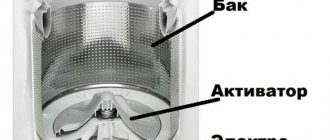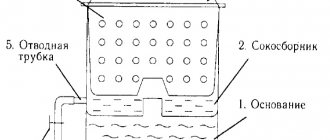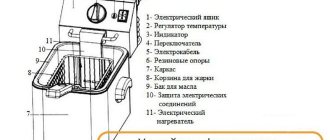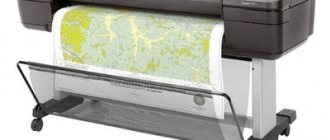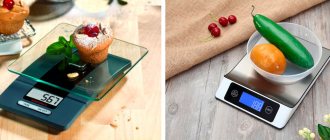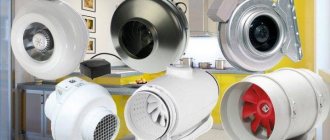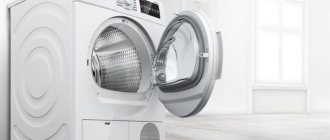Operating principle of a manual coffee grinder
During the mechanical grinding process, coffee is ground between two millstones. The grains move downwards, grinding into small particles. The millstones have a conical shape, with the inner one rotating freely around the outer one, which is rigidly fixed. To operate a mechanical coffee grinder, you twist the handle.
How to adjust grinding
Degrees of coffee grinding
By adjusting the distances between the grinders, it is easy to obtain coffee of the desired degree of grinding. How to set up a coffee grinder? In eastern models, this is done by turning the screw on which the handle is attached. In European coffee grinders, a special regulator is installed in the desired position. You can get different grinding:
- coarse - the grains are ground into a mixture similar in size to coarse salt;
- medium – finer grind (ground coffee can be compared to granulated sugar);
- extra - ground coffee resembles powder, but small grains of grains are felt to the touch.
This point is important when preparing coffee drinks. Coarsely ground grains are suitable for a French press, while small and extra grains are excellent for brewing in a Turk.
Types of manual coffee grinders
When choosing manual coffee grinders, two types of devices can be distinguished, depending on the type of base, the location of the handle and the material.
European
Such models are designed simply: a small cubic body, a handle (can be attached to the top or side) and a container for grains. European coffee grinders look very aesthetically pleasing and resemble an elegant wooden box. Products decorated with carvings can become a decoration for the kitchen. Suitable for preparing freshly ground coffee for literally 2-3 cups. The grinding option is stepped.
Eastern
Such devices look like a cylinder with a handle located on top. Paintings or patterns add real sophistication to the products. Oriental coffee grinders have small containers for storing ground beans. This is very convenient if in the morning you only have time to make coffee and drink. The grinding option is stepless.
Important criteria for choosing manual coffee grinders
A wide range of models of coffee grinders allows you to choose a device not only by price and appearance.
Material of manufacture
Manufacturers use different materials to make cases and containers. Steel is used to create oriental coffee grinders. The body material of European models can be: wood (beech), brass, porcelain, plastic.
The millstones deserve special attention. These details determine the lifespan of the devices and the quality of the ground coffee. Made from the following materials:
- Cast iron is an inexpensive metal that provides a long service life. However, over time, you may notice a slight metallic taste in the ground coffee. This is due to the grinding of metal elements;
- Hardened steel makes the coffee grinder reliable; metal parts do not absorb odors. However, this material wears out faster than cast iron. Firms have solved this problem - millstones are made of titanium alloy. Although such an improvement significantly increases the price of the device;
- Ceramic millstones grind grains perfectly. Unlike metal ones, they are not afraid of water and practically do not wear off. The main disadvantage is the fragility of the material, so if the coffee grinder falls, there is a high probability that the millstones will break.
Parts made from natural materials are durable, resistant to moisture and do not absorb odors. Stone millstones can grind coffee into dust. Naturally, such models are not cheap.
Functionality
The name of the device does not imply that its use is limited. A coffee grinder is excellent for grinding many products:
- Grinding various cereals allows you to obtain a fine fraction product. This is especially in demand in families with small children. By adjusting the degree of grinding, it is easy to obtain cereals ground almost into flour, which will allow you to prepare pureed porridges (corn, rice, wheat, buckwheat);
- Grinding spices at home will preserve their aroma. To do this, it is advisable to use a coffee grinder directly during the cooking process. You can grind anything: cardamom, sea salt, peppercorns, flax or sesame seeds, cinnamon;
- dried ground vegetables, fruits, berries (without seeds) will give dishes an excellent and unusual flavor.
In order for the grinding of cereals and spices to be truly high-quality, it is recommended to pre-dry the porridge and lightly heat the grains or seeds in a heated frying pan.
Important! Do not grind nuts with high fat content (walnuts, peanuts), which can clog the millstones.
Handle location
In devices, the handle is attached to the top or side. In some European models, the handle is fixed on the side of the wheel. Such mills are more stable on the table and the side handle is easier to rotate than the top handle.
In Eastern models and some European ones, the handle is located on top. A special advantage of oriental coffee grinders is that the handle can be removed and very little space is required to store the device. The grinding quality can also be adjusted using the knob.
The choice of options is a matter of taste and comfort. You need to immediately evaluate how it will be more convenient to rotate the millstone mechanism.
Containers for grains and finished powder
In all devices, the grain container is located on top. It usually holds from 10 to 100 g of coffee. Some models are equipped with special covers that muffle the noise during grinding. You can store beans in such coffee grinders, but you must keep in mind that their aroma will quickly evaporate. If coffee is often prepared for a large group, it is better to take a model with a large capacity.
In European coffee grinders, the drawers for ground grain are small (literally for 2-3 cups) and there is no special container for storing it. In eastern models, the compartment for ground grain is located at the bottom, but its size is smaller than the grain container.
Manual or electric?
According to its characteristics, a manual coffee grinder is much more useful and convenient than an electric one. Firstly, it saves energy. Secondly, it is more careful with the coffee bean. Its metal millstones grind the beans instead of crushing them at high speed, as happens in electric coffee grinders. This preserves the taste and aroma of coffee. Depending on your preferences, you can choose the degree of grinding yourself, which you cannot do with an electric coffee grinder. Thirdly, the devices are compact, there is a place for them in any kitchen.
The direct competitor of the burr hand coffee grinder is the rotary device. It consists of the following structural elements: a body (metal or wood, less often plastic), a container for filling grains with a lid, and a rotary knife.
There is an opinion that the main disadvantage of rotary coffee grinders is that they do not allow you to change the degree of grinding, as a result of which the coffee particles are of different sizes. This is not so important when the drink is brewed in a Turk, but uniformly ground coffee is better for a coffee maker. When preparing a drink, adjusting the degree of grinding is very important, because different types of coffee require powder of varying degrees of grinding.
Unlike knife models, a manual burr coffee grinder allows you to obtain coffee particles of the same size. In them, grains are crushed using metal discs. The mass turns out almost homogeneous. The burr is more selective and its design ensures an even grind thanks to the simple yet clever design of the screw.
Manual mechanical burr coffee grinders allow you to adjust the degree of grinding. When you change the position of the regulator, the distance between the discs changes and, accordingly, the size of the coffee grains. In a matter of minutes, this coffee grinder will turn the beans into powder (mind you, powder, not dust).
Despite the abundance of mechanical household items, a manual coffee grinder is a useful item in the home; consumer reviews about it are mostly positive. You will feel the difference when you prepare coffee in a coffee grinder and brew it right away. The drink will be rich and very aromatic.
Which coffee grinder is better - manual or electric?
When comparing devices, attention is paid not only to the grinding quality. It is important to know the pros and cons of electric and manual models.
Thanks to electric coffee grinders, grinding time is significantly saved. Using the device is easy and convenient, and retail chains offer a wide range of products (prices, sizes, designs). The disadvantages include the need for a power source and the lack of adjustment of the grinding level. Powerful units heat up the grains during operation and this can cause the drink to become bitter.
When using manual devices, it is easy to get coffee of the desired grind, the beans do not overheat and the drink does not taste bitter. The devices operate quietly, do not require electricity, are reliable and safe. Negative qualities: obtaining a ground product requires time and manual labor. It is not always possible to immediately adjust the desired grinding level.
The choice of device is also influenced by the rhythm and lifestyle of the buyer, his habits. If you like to quietly enjoy a fragrant cup of coffee, a manual model will give you such pleasure. Energetic people who receive many guests should give preference to electric units.
Which is better: manual or electric burr grinder?
A manual millstone coffee grinder allows you to get aromatic coffee in a special drawer for 5 minutes or longer (for one serving). In the morning, to a person late for work, this time will seem wasted, but you can only enjoy the coffee ritual without rushing anywhere in this way.
The discs of a hand mill are most often made of metal or ceramic, and the grinding fineness is adjusted by tightening the screws. The crushing apparatus consists of two conical millstones: the first rotates from a handle, the second is rigidly fixed. A mechanical device will last a long time because there are no electronics, no network failures, and the rest of the components are quite durable. Such devices do not burn coffee. And the price of manual coffee grinders is always cheaper than electric models.
Electric burr coffee grinders belong to the premium segment and their prices are higher than knife or manual devices. Electric ones are more productive, with uniform and high-quality grinding, with less effort and time.
Rules for caring for a manual coffee grinder
It is not recommended to wash coffee grinders under water, especially with cleaning agents. For exterior cleaning of wooden cabinets, it is better to use wood cleaners.
Advice! If the steel case is very dirty, wipe the stains with napkins moistened with detergents (without abrasive additives). Then the device is thoroughly wiped dry. It is recommended to clean rust with a special composition.
Over time, an oily coating accumulates on the inside walls of coffee grinders. It is advisable to wipe containers for beans and ground coffee with dry wipes.
To clean the millstones, experts advise using rice, which perfectly absorbs oily deposits and eliminates odors. A small amount of grains is poured into a container and ground. To prevent leftover rice from getting into the drink, the first portion of ground coffee is thrown away.
Caring for your coffee grinder
Like any electrical appliance, a coffee grinder can only be used in compliance with the rules and regulations.
In coffee grinders with a rotary structure, the main attention should be paid to regular cleaning of the working knife. It needs to be cleaned every time after grinding coffee. This is done with a damp cloth or napkin. Residues of ground coffee should be carefully removed from the cutting edge of the knife, as otherwise they may oxidize and become unusable over time. Naturally, the entire remaining cavity of the working container must be cleaned.
In a millstone machine there is no access to the working surface, but it is advisable to change the millstones themselves after a certain period of time. It is believed that replacement should occur after grinding work of approximately 250 kg. coffee. This strength resource is built into the design of the machine and when it is exhausted, the grinding quality decreases.
It is prohibited to wash the coffee grinder by completely immersing it in water. Since in this case its electromechanical part may become unusable. It is permissible to wipe the case with a damp cloth.
When operating, you must adhere to the optimal operating time of the device. According to experts, continuous operation of the motor is more than 1 minute. negatively affects its durability. If there is a need to continue working, you need to pause for 15–20 seconds. and only then turn on the device again.
Review of popular manufacturers
Among the variety of models, there are several manufacturers of the best manual coffee grinders:
- Bekker - produces European coffee grinders. The retro-style model looks stylish, in which the grain container and the side handle in the form of a wheel are made of cast iron. And the millstones are metal-ceramic. Products with a wooden box and ceramic millstones are also in demand. The volume of the container for grains is 30-40 g.
- TimA offer European-style mills with a more modern design. The wooden box looks harmonious with the metal dome-shaped funnel. The size of the box for grains is 40 g. The company also offers products of oriental type: the cylindrical metal body is decorated with elegant oriental ornaments. Capacity for grains – 30 g.
- Mayer&Boch offer a product with a wooden-ceramic body and a steel funnel for coffee beans (capacity 50 g). Thanks to the wide base, the model is stable and easy to use.
- Tescoma has released a cylindrical model with a modern look, assembled from metal and plastic. Thanks to the marks on the special cup, it is easy to keep track of the amount of ground coffee received (for 1,2,3,4 cups).
Manufacturers offer a wide range of coffee grinders. When choosing a manual device, you need to focus on the material of the millstones, the aesthetic qualities of the case and the comfort of using the device.
